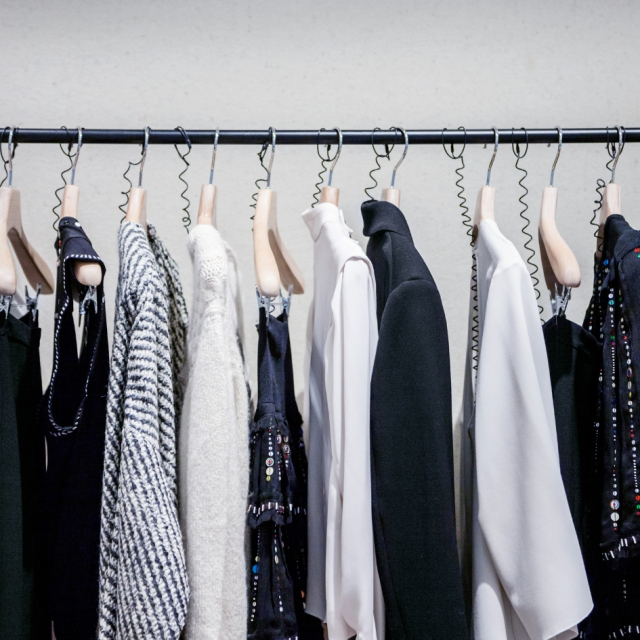Choosing and combining clothes can be a challenging task for many people. Achieving a balanced look that suits each occasion requires understanding factors such as personal style, color combination, trends, and comfort. In this article, we will explore the basic principles and practical tips for selecting and combining clothes effectively.
1. Know your Personal Style.
The first step in choosing clothes is to identify your personal style. This will reflect your personality and become the basis for building your wardrobe.
How to discover your style?
- Look at what you already have: Go through your wardrobe and write down the items of clothing you use and enjoy the most.
- Find inspiration: Explore platforms like Pinterest or Instagram to identify styles that appeal to you.
- Experiment: Don't be afraid to try different combinations and garments to find what best suits you.
For example, if you like comfortable and relaxed looks, you might lean towards a casual style, while if you prefer elegant clothes, you might opt for a more classic style.
Fountain:
2. Master Color Combinations.
Color combinations are essential to create harmonious and visually pleasing outfits.
Basic color principles:
- Use the color wheel: Learn to combine complementary colors (opposite on the wheel), analogous (adjacent) or monochromatic (different shades of a single color).
- Choose a base color: Select a neutral shade such as black, white, grey, beige or navy to build your outfit.
- Add pops of color: Incorporate bold colors through accessories or secondary garments.
For example, a basic outfit of black pants and a white shirt can be jazzed up with a red blazer or a turquoise necklace.
Fountain:
- Pantone: Color Guide for Fashion
3. Know your Body Type.
Choosing clothes that flatter your figure is key to looking and feeling good.
How to dress according to your body type:
- Hourglass shape: Accentuate your waist with fitted dresses or belts.
- Triangle shape (wide hips): Balance your figure with striking tops and neutral colors on the bottom.
- Rectangular Shape: Add volume with layers or structured garments to create visual curves.
- Inverted triangle shape (wide shoulders): Opt for wide-leg pants or voluminous skirts to balance your figure.
Understanding your body type will help you choose cuts and styles that highlight your best attributes.
Fountain:
4. Select Basic and Versatile Garments.
Basic pieces are the backbone of any wardrobe. These pieces are easy to mix and match and allow you to create multiple outfits with just a few options.
Basic essentials:
- White shirt.
- Black pants.
- Classic cut jeans.
- Black dress.
- Neutral blazer.
- Solid color t-shirts.
These garments can be adapted to any occasion by combining them with more striking pieces or accessories.
Fountain:
- InStyle: The basics you need in your wardrobe
5. Consider the Occasion.
Each event or situation requires a specific dress code.
How to dress according to the occasion:
- Formal events: Opt for long dresses, suits or elegant garments in neutral colors.
- Work environment: Wear professional clothing, such as blouses, slacks, or suits.
- Casual outings: Combine jeans with comfortable t-shirts or sweaters.
- Outdoor activities: Prioritize functional and comfortable clothing, such as sportswear or light cotton clothing.
The key is to make sure your outfit reflects the level of formality required without sacrificing your comfort.
Fountain:
- Harper's Bazaar: How to dress for every occasion
6. Play with Accessories.
Accessories are a simple and effective way to transform any look.
Ideas for using accessories:
- Jewelry: Add a touch of elegance with statement necklaces, bracelets or earrings.
- Bags: Choose functional models for everyday and more elegant options for special events.
- Belts: Use belts to define your waist or add interesting details.
- Scarves and hats: These are ideal for adding color and texture to your outfits.
A simple outfit, such as jeans and a t-shirt, can be instantly elevated with a statement necklace or designer bag.
Fountain:
- Glamour: How to use accessories
7. Invest in Quality, Not Quantity.
It is better to have a few good quality items than a wardrobe full of clothes that wear out quickly.
Benefits of quality clothing:
- Greater durability.
- Better fit and comfort.
- More professional and elegant appearance.
By investing in quality pieces, you also reduce your environmental impact, as you contribute to more conscious and sustainable consumption.
Fountain:
- Business Insider: Why you should invest in quality clothing
8. Trust Your Instinct and Be True to Yourself.
While rules and tips are helpful, the most important thing is to feel comfortable and confident in what you wear.
Final tips:
- Be authentic: Don't follow trends just because they're trendy; choose what you really like.
- Try before you buy: Make sure clothes fit well and are comfortable.
- Listen to your intuition: If an outfit makes you feel good, it's probably the right choice.
Self-confidence is the best accessory you can wear.
Fountain:
- Marie Claire: How to find your fashion confidence
Choosing and combining clothes can seem complicated at first, but with practice and a little know-how, it is possible to master the art of dressing well. From understanding your personal style to learning how to play with colors, accessories and body types, each step is important to build an image that reflects who you are.
Remember that fashion is not just about looking good, but about feeling good about yourself. Invest in quality, be authentic and use clothes as a tool to express your individuality.
Sources consulted:
- Elle: Discover your personal style
- Pantone: Color Guide for Fashion
- Vogue: How to dress according to your body type
- InStyle: The basics you need in your wardrobe
- Glamour: How to use accessories
